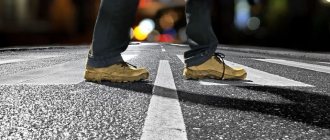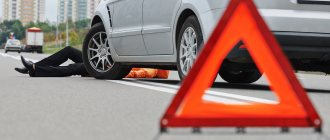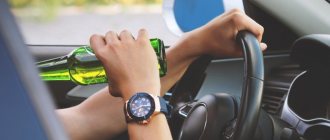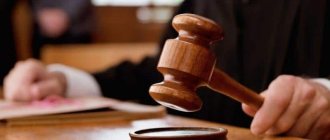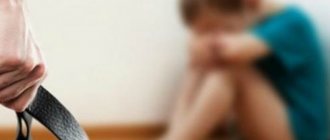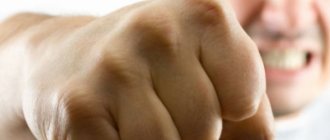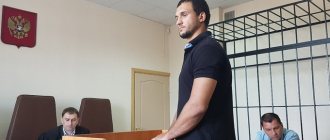An accident involving a pedestrian is a very common occurrence, and it is sad when it results in death. If an accident occurs, it is very difficult to sensibly assess the situation.
In such cases, it is better to make yourself a reminder of actions so as not to get confused. Ordinary actions will invigorate the mind and prevent you from making mistakes that will lead to worse consequences. It is important to remember that an accident involving the death of a pedestrian is a complex and scary situation. In any case, the driver is primarily responsible for this.
What fine and/or other preventive measures are provided?
An accident involving a pedestrian being hit to death requires a number of procedures and the completion of specialized documentation, after which a conclusion is made - the culprit is given a fine for hitting a pedestrian or another preventive measure. The case is being conducted by the court and traffic police officers, they consider the case of violation and decide whether to initiate a criminal case or not (the case is under Article 109 of the Criminal Code).
Before imposing a punishment, you should pay attention to the collection of mitigating and aggravating circumstances (for example, weather conditions, the moral and physical condition of the pedestrian or driver, lighting, the condition of the road surface and the car). The culprit is awaiting punishment for 10 days.
Each case of an accident involving a fatal pedestrian is individual, but the culprit bears a fine or punishment in the standard form:
- confiscation of driver's license;
- imprisonment for up to 7 years;
- forced labor for up to 4 years;
- monetary and material fines.
Each incident has nuances that vary the terms of service and punishment . For example, aggravated: more than two people died while intoxicated. For this, the driver is imprisoned for up to 9 years.
If the driver is at fault
The driver's fault in most cases occurs when traffic rules are violated or simple inattention. For example, speeding in front of a pedestrian crossing or in a crowded place, untimely braking or dangerous maneuver by vehicles.
A frequent location for road accidents with an increased mortality rate is a pedestrian crossing (controlled and uncontrolled). The incident here is considered under Article 13, paragraph 1 of the Traffic Regulations, and the driver’s guilt is proven under Article 264 of the Criminal Code.
You can find out more about the punishment for hitting a pedestrian at a pedestrian crossing here, and you can read in more detail about what the fine will be for not allowing a pedestrian to cross a zebra crossing in this material.
If a dangerous situation was caused by someone crossing the road
The blame for an accident lies with the pedestrian if he provoked a dangerous situation or set up the driver . For example, in practice there are many cases of collisions with pedestrians at night - it is very difficult to see a person in dark clothes, without reflectors on them, in an unlit place on the street - it is not easy for the driver to quickly react and control the controls.
A dangerous situation is created by drunken pedestrians walking along the road, children playing near it, and people who do not know the traffic rules.
A pedestrian guilty of the death of a driver or other persons is punished with imprisonment from 4 to 7 years. If a pedestrian causes an accident but dies, the driver bears administrative and criminal liability for this. But, if during the investigation the undeniable guilt of the pedestrian is proven, then the investigation may take the side of the driver’s defense.
If the driver is intoxicated
The state of alcoholic intoxication of a motor vehicle driver, as well as leaving the scene of an accident, is an aggravating circumstance when dealing with an accident involving the death of a pedestrian. According to Article 264 of the Criminal Code of the Russian Federation (Part 4), a drunken or runaway driver who hits a pedestrian to death receives a sentence of 5 to 12 years. According to Part 6 of the same article - from 8 to 15 years in case of death by two or more persons.
If you fled the scene of an accident
Leaving the scene of an accident resulting in the death of a pedestrian entails not only an administrative, but also a criminal violation of traffic rules. According to the circumstances of the violation, the degree of punishment is revealed; leaving the place is an aggravating fact. A driver who leaves the scene of an accident, leaving a dead pedestrian (or dying) is liable under the following articles:
- If minor or moderate harm to health is caused - 12.27 Code of Administrative Offenses, Part 2 - deprivation of a driver's license, arrest for 15 days;
- If grievous harm was caused - 264 Criminal Code part 2 - forced labor for a term of up to 5 years or imprisonment for a term of 3 to 7 years.
Important note!
If there is no harm to health, but there is property damage
Then there is civil liability. For example, if a pedestrian fell and got dirty as a result, you hit his dog (pets are considered property under the Civil Code of the Russian Federation).
In this case, the damage will need to be compensated according to the victim’s expenses for restoring his property (the same clothes) to its original condition.
If a pedestrian is slightly harmed
Then there is a risk of deprivation of rights under Part 1 of Article 12.24 of the Administrative Code. But this norm does not imply an unconditional deprivation of the right to drive. The driver may be assigned, at his choice, a person reviewing the case:
- a fine of 2,500 to 5,000 rubles for hitting a pedestrian causing minor damage to health,
- deprivation of rights for 1-1.5 years.
This is an administrative liability, and it does not cancel the civil liability - compensation for the costs of restoring health and property damaged as a result of a hit-and-run accident.
Please note that in this article, minor harm means minor loss of health or minor loss of ability to work. The 2021 legislation does not specify what.
If moderate harm to health is caused
By average damage, legislators already understand loss of health for a long time, but without risk to life, or loss of ability to work by at least a third.
And for such harm to a pedestrian who is hit, the driver faces either a fine of 10 to 25 thousand rubles, or deprivation of his license for 1.5-2 years.
If the driver was drunk
Then, according to administrative law, unlike criminal law, he will simply be given another punishment - deprivation of rights for drunkenness (Article 12.8 or 12.26 of the Administrative Code - the latter, if he refused a medical examination).
Liability for a fatal collision
In the event of a hit-and-run accident, the driver of the vehicle bears responsibility:
- civil;
- criminal;
- administrative;
- legal;
- property;
- material.
Material
- Article 1064 of the Civil Code talks about material compensation for damage after a collision. For example, this is damage to clothes, mobile devices, bicycles;
- According to Article 1085 of the Civil Code, the driver is obliged to compensate for the damage caused to health: to pay for a course of treatment, medications, a recovery course, and care for the victim.
If there is compulsory motor liability insurance, it covers damage (but not more than 400 thousand rubles and 475 thousand for treatment for lost income, 25 thousand for funeral).
- Harm caused to the person or property of a citizen, as well as harm caused to the property of a legal entity, is subject to compensation in full by the person who caused the harm.
By law, the obligation to compensate for harm may be imposed on a person who is not the cause of harm. The law or contract may establish the obligation of the harm-doer to pay compensation to the victims in excess of compensation for harm. The law may establish the obligation of a person who is not the causer of harm to pay compensation to victims in excess of compensation for harm. - The person who caused the harm is released from compensation for harm if he proves that the harm was not caused through his fault. The law may provide for compensation for harm even in the absence of the fault of the harm-doer.
- Damage caused by lawful actions is subject to compensation in cases provided for by law. Compensation for harm may be refused if the harm was caused at the request or with the consent of the victim, and the actions of the harm-doer do not violate the moral principles of society.
Property
According to Article 1085 of the Criminal Code, the culprit driver will be liable for compensation for damage caused during a collision and resulting in death. Damage is compensated to the relatives of the deceased in the following order:
- funeral expenses;
- maintenance of family or relatives left without guardians;
- compensation for moral damage under civil liability.
Criminal
The culprit of the accident bears criminal liability . Punishment for a pedestrian who was hit to death under Article 264 of the Criminal Code is imprisonment for a term of 3 to 12 years.
It is important to consider factors that influence the degree of punishment. They can either increase or decrease the period.
For example, the state of intoxication of a driver or pedestrian, leaving the scene of an accident, the number of people hit, weather conditions.
What if the driver is not at fault?
So, the second case in the situation we are discussing is when the blame falls entirely on the pedestrian. And yes, even if he died as a result of this, guilt does not automatically pass on to other people - the legislation does not work that way.
Thus, the driver may not face anything in terms of criminal or even administrative liability. But there is one “but”!
Now the bad news: even if there is no fault in the accident, the driver of the car will be held liable if the pedestrian is harmed as the owner of the source of increased danger. That is, compulsory motor liability insurance, if available, will pay funeral expenses and payments to the relatives of the pedestrian who was hit to death.
Alas, this is the law! Article 1079 of the Civil Code indicates that, regardless of guilt, the driver shall compensate for the damage caused by his car... Yes, even if he did not violate anything.
That is, compensation for harm from both parties will look like this:
- The driver's compulsory motor liability insurance (or he himself, if there is no insurance for the car) pays, within the limit of 500,000 rubles, payments to the next of kin of the pedestrian who was hit,
- the heirs of the latter pay property damage for the damaged car, as well as for damage to the health of the driver, if any.
Please note how this article works, according to 2021 case law, with bicycles:
- the car is a source of increased danger (IPO) to bicycles and pedestrians (including those on regular or electric scooters, hoverboards and other equipment),
- a bicycle is an IPO in relation to a pedestrian.
That is, if a cyclist allows a collision with a pedestrian through the latter’s fault, then the owner of the two-wheeler is also responsible.
What to do if an accident occurs?
According to the rules of the traffic rules, article 2, clause 6, a driver who hits a pedestrian must take the following actions:
- do not leave the scene of an accident;
- if the person can still be saved, then provide him with first aid;
- call an ambulance and wait for it to arrive;
- call the traffic police;
- clear the roadway for other traffic so as not to create a traffic jam, this will allow an ambulance to arrive (be sure to first record the position of the car during an accident and other circumstances in a photo or video for evidence in the case);
- according to Art. 2 clause 5 of the traffic rules, you can not touch the car if it does not interfere with traffic (it is important not to forget to put up an emergency sign);
- record data from eyewitnesses and transfer them to authorities;
- if you are insured, then call the company and report the incident, you can contact a lawyer.
It is important not to get confused if an accident occurs. Maybe you can still save a person. In this case, you do not need to have a special medical education, but you can do the basic things in your hands - stop the bleeding, perform artificial respiration, perform a closed cardiac massage, apply bandages to the fractures.
A drunk pedestrian died under the wheels
Sometimes drivers wonder whether any penalties will be applied to them if a drunk pedestrian dies as a result of a collision. In fact, it makes no difference whether the pedestrian was intoxicated or not. First of all, responsibility for the safety of all road users lies with the driver as he drives the car.
Under current law, the pedestrian's condition and level of sobriety do not play any role in what punishment a driver will receive for causing a fatal collision with a pedestrian. If the driver tries to prove his innocence, he will have to provide a video recording from the recorder or add witness statements to the case.
The minimum possible punishment, taking into account all mitigating circumstances, will be suspended imprisonment.
Controversial situations and ways to avoid punishment
It happens that during an accident with the death of a pedestrian, controversial situations arise when the driver is not to blame for his death . If this is proven, then the severity of the punishment will not be determined or the court will come to the driver’s defense.
For example:
- when a pedestrian crosses the road in the wrong place, and the driver did not see him. At the same time, all traffic rules were observed, the speed was not exceeded;
- when a pedestrian created a situation in which it was necessary to collide with other vehicles or a crowded place;
- a drunken pedestrian on the road creates the risk of an accident (you can find out more about what to do if a driver hits a drunk pedestrian here).
In any case, it is difficult to prove the guilt of a pedestrian, especially if he died himself. Most of the responsibility will always remain with the driver, but he has the right to protect himself from false accusations.
False accusations can be countered by doing the following::
- collecting evidence that the pedestrian violated traffic rules;
- prove compliance with traffic rules by the driver;
- pay attention to the completion of documentation by police officers;
- contacting a lawyer;
- do not give any testimony until the lawyer arrives.
Compliance with these actions should ensure legal safety for the driver.
If you hit a person to death
— in the event of the death of a downed citizen, criminal liability may be predominantly under Art. 105 or 109 of the Criminal Code of the Russian Federation.
The measure of responsibility also depends on mitigating or aggravating circumstances, the behavior of the driver, and other circumstances of the case. Apparently, the same circumstances can lead to different liability.
Lawyers or lawyers can tell you more about liability in an accident when a citizen or a group of people was hit, assessing this particular situation with the circumstances that occurred. It is important to understand that under different circumstances liability will be different.
Make an appointment and contact us for help!
How can the traffic police prove your involvement in the accident?
The traffic police inspector, according to Article 25.1 of Part 1 of the Code of Administrative Offenses, is obliged to inform the violator and prove his guilt . But the inspector is not obliged to justify his evidence in the accusation to the driver, but only presents it. It is important to remember that according to the code, the presumption of innocence in relation to traffic rules does not apply, although it is possible to appeal the decision (the culprit is given a period of ten days).
The traffic police officer is responsible for maintaining the safety of citizens, therefore he has the right to accuse of violation. The employee is not required to prove guilt in an accident on the spot, but he may have testimony and evidence at his disposal (for example, a video recorder, road surveillance cameras, photographs of eyewitnesses). In this case, the driver receives a whole package of evidence with justification during the investigation.
If the culprit does not agree with the accusation, then this should be indicated in the protocol and ask for a copy of it to send to the court for appeal. A traffic police officer who has photo and video evidence must indicate it in the protocol , and also records the data of the technical device or means that filmed the incident. If the inspector reported the materials, but did not write about them in the protocol, it is necessary to indicate this deviation in the protocol. The inspector may record a conversation when a violation is accused.
The method is designed for emotionally unstable drivers who cannot conduct a conversation competently and do not know how to use legal terms - the driver’s breakdown will be another proof of guilt. The inspector can prove the driver’s guilt, which will be recognized in court, if the driver signs the protocol, which does not indicate evidence of his guilt.
If such a circumstance is noticed, then sign only after the accused points out this discrepancy and the actions of the traffic police officer or writes disagreement with the accusation. If there are suspicions that the actions of a traffic police officer are illegal, then you should risk reminding him of Article 12.35 of the Code of Administrative Offenses.
It is important to remember that knowledge of the law will protect the driver from false accusations and will allow him to behave competently when detained.
Some nuances about where the driver hit the pedestrian are also important:
- outside the pedestrian crossing;
- on the sidewalk and in the yard.
Property liability
In a situation where a pedestrian died as a result of an accident, and the driver’s guilt is fully proven, he is obliged to cover the damage to the relatives of the deceased. The amount of compensation will include:
- all costs associated with burial;
- payment for the maintenance of dependents of the deceased person;
- payment of funds in connection with moral damage.
Dependents may be people who were supported by the deceased due to any events or circumstances. As a rule, dependents do not have the opportunity to fully and completely independently provide for their own lives.
The amount of each cost item is determined individually. Thus, the amount of compensation for all expenses for the burial of the deceased is confirmed by various expense documents and checks. The amount that must be transferred for the maintenance of dependents is specified in the relevant law. And the amount of compensation for causing moral damage is necessarily determined by the court’s decision. In each specific case, the amount of moral damage may differ.
Pedestrian rights
The victim can file a lawsuit against the driver who hit him. This can be done to recognize moral damage and material damage .
Moral damage refers to emotional suffering and the general condition of the person who finds himself in such a situation. Material damage – money spent on treatment, lost profits, lost wages , etc.
The claim is filed for any severity of the collision at the request of the victim. The court independently decides whether to satisfy the claim. He may order the defendant to pay half, 1/3 or 1/100 of the named amount.
Registration of an accident
- Inspection protocol . In case of minor or moderate harm to health, the document is drawn up by a traffic police inspector . If the victim has died or suffered serious harm , a special team (automotive technician, criminologist, investigator) goes . All traces are examined, material evidence is confiscated;
- The technician inspects the car, the results of this inspection are also recorded in the protocol;
- A survey of eyewitnesses to the incident is conducted, all data is recorded;
- Profile automotive examinations are carried out (traceological, automotive technical). They are necessary for correctly determining the mechanism of an accident;
- Forensic-medical examination . It is necessary to identify the degree of harm caused to health and/or the cause of death of the victim;
- Based on the results of all actions, a procedural decision is made.
If the accident is serious, with serious bodily injuries , injuries incompatible with life, the case is sent to the prosecutor's office . The investigator initiates a criminal case .
When will the driver be found guilty?
If the victim died under the wheels of a car, then the guilt of the driver is established based on the available facts. In this situation, it is important to have not only witness testimony, but also recordings from CCTV cameras and DVRs. The following facts will help prove and disprove the guilt of the car owner who hit a pedestrian:
- vehicle speed, which is determined by technical and other means, including braking distance on the road;
- place of incident - outside the city, in the city, pedestrian crossing;
- state of intoxication of the driver and the victim - only the result of the medical examination is taken into account;
- actions of the driver after the accident - left the scene of the accident, called the police, provided first aid, etc.;
- The testimony of witnesses at the time of the accident also influences the court verdict;
- presence/absence of malicious intent;
- legal protection with the support of a lawyer.
Note!
By leaving the scene of an accident after a person has been hit, you risk being left without a license and deprived of your freedom, even if you are innocent!
Do you have any questions?
To get the most detailed advice on your issue, you just need to follow any of the suggested options:
- Request a consultation using the form
on our website - Or just call the number: 8 800 350-83-74
Summary
Any traffic accident with a fatal outcome or moderate harm to human health is stressful for all participants in the incident. Often the emotional side prevails over common sense, the relatives of the person who was hit show aggression, and the person responsible for the accident loses self-control. Lynching, drinking alcohol to relieve stress, escaping from the scene of an accident - all of these will be recognized as aggravating circumstances in which a person will not only receive the maximum sentence, but can also be convicted under a more stringent article of the criminal code. This applies to both the driver and the injured party (relatives of the person hit):
- failure to provide medical care – attempted murder;
- lynching of the culprit - threat of physical violence and arbitrariness;
- causing serious harm to health, damage to property, etc.
A short summary for drivers involved in an accident in which a person was hit and killed:
- after stopping the car and installing an emergency parking sign, you should check the condition of the victim and call doctors;
- before the ambulance arrives, try to find witnesses to the accident who will confirm the incident;
- take a photo of the accident scene, and also videotape everything, including the braking distance;
- if you have a lawyer’s telephone number, it is better to call him immediately to the scene of the accident;
- wait for the traffic police officers and carefully study the documents they compiled before signing.
What is taken into account when assigning responsibility
When assigning responsibility to a driver who hit a person to death, the court must take into account all the circumstances of the incident:
- who was at fault for the collision;
- where exactly the collision occurred;
- whether the driver was drunk or under the influence of drugs;
- whether the collision was committed due to malicious intent or negligence;
- whether the driver had a real opportunity to avoid the accident.
For example, consider the item “where exactly the collision occurred.” It’s one thing on the highway, in a place where crossing is not allowed, and quite another thing within the city, right at a pedestrian crossing. In the second case, it is difficult to talk about the driver’s innocence, but you need to look at what traffic light signal the pedestrian was moving towards, and it does not matter whether the victim was drunk (from the point of view of the law, in any state he is the most ordinary person). But if the driver’s absence of guilt is proven, you can count on a reduced sentence. The nuances for all other circumstances are considered in a similar way.
Important! You can count on a reduced sentence if all measures are taken to help the victim, his treatment is paid for (if the person with injuries was in the hospital for some time), and financial support is provided to the family of the deceased.
